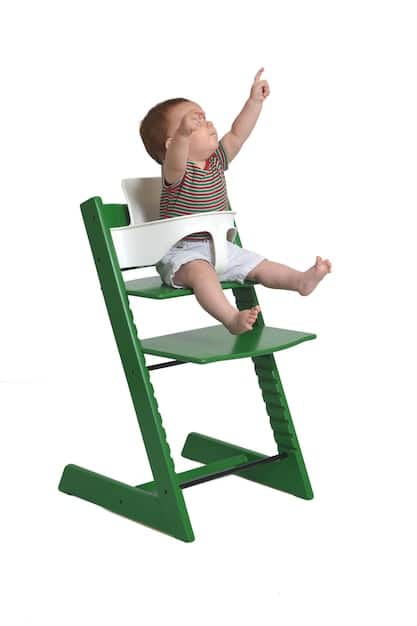Baby’s First Foods: Pediatrician’s 2025 Timeline for Optimal Nutrition

Baby’s First Foods: A Pediatrician’s Recommended Timeline for 2025 provides a structured guide for introducing solid foods to infants, ensuring they receive essential nutrients at each stage of development, supporting healthy growth and minimizing potential allergies.
Navigating the world of **Baby’s First Foods: A Pediatrician’s Recommended Timeline for 2025** can feel overwhelming. When should you start introducing solids? What foods are best, and how can you minimize the risk of allergies? This guide will walk you through a pediatrician-approved timeline to ensure your little one gets the nutrition they need for healthy development.
Understanding the Importance of Timing for Baby’s First Foods
Introducing solid foods is a significant milestone in your baby’s life, but it’s crucial to understand why timing is so important. Starting too early or too late can have potential drawbacks for their health and development. Let’s explore the key reasons behind the 2025 recommended timeline.
Introducing solids at the right time ensures your baby gets essential nutrients that breast milk or formula alone may no longer fully provide. It also plays a role in developing their oral motor skills and helps in preventing potential feeding difficulties later on.
Why Not Start Solids Too Early?
Introducing solids before your baby is ready can lead to digestive issues and an increased risk of allergies. Their digestive system needs to mature enough to handle foods other than breast milk or formula. Starting too early can overwhelm their system.
Why Not Wait Too Long to Introduce Solids?
Delaying solids for too long could result in nutritional deficiencies, especially iron and zinc. Additionally, it might delay the development of important chewing and swallowing skills, potentially impacting their ability to accept a variety of foods later.

Consulting your pediatrician is always recommended. They can assess your baby’s readiness based on their individual developmental milestones and provide personalized advice tailored to your baby’s specific needs. They can help you navigate any concerns or potential allergies.
Therefore, a pediatrician’s guidance ensures your baby receives the right nutrients at the optimal time, supporting their growth and development while minimizing potential risks. It’s about finding the sweet spot where your baby is developmentally ready and nutritionally benefits from the introduction of solids.
Key Readiness Signs for Starting Solids in 2025
Before diving into the timeline, it’s crucial to identify the key readiness signs your baby exhibits. These signs indicate that your baby is developmentally ready to start exploring solid foods. Keep in mind that every baby develops at their own pace, so it’s essential to observe your little one closely. Here are some key indicators:
Look for cues such as good head control and the ability to sit upright with minimal support. Additionally, being able to show interest in food and reach for food on your plate are great signs that your baby is ready to start exploring solids.
- Head Control: Baby can hold their head steady and upright.
- Sitting Upright: Baby can sit with minimal support.
- Interest in Food: Baby watches you eat and may reach for your food.
- Tongue-Thrust Reflex: The reflex that pushes food out of the mouth has diminished.
Also, be sure the tongue-thrust reflex has diminished or disappeared is important. This reflex naturally pushes food out of a baby’s mouth. Finally, if your baby still seems hungry after a full feeding of breast milk or formula or has doubled birth weight, it may be time to start solids.
These signs serve as vital clues that your baby is ready to embark on the exciting journey of tasting and experimenting with solid foods. However, it’s best to consult with your pediatrician to make sure your baby is ready and can start solids.
The Pediatrician-Recommended Timeline: 4-6 Months
The general consensus in 2025 is that most babies show signs of readiness for solids around 4 to 6 months of age. It’s important to remember that this is just a guideline; some babies may be ready sooner, while others may need a bit more time. Now lets take a look at what foods and considerations should be taken during this timeline.
This is the earliest point at which many pediatricians recommend introducing solids, provided your baby exhibits the key readiness signs. Starting at this age allows your baby to gradually adjust to new textures and flavors while still getting the primary nutrition from breast milk or formula.
First Foods to Introduce
Begin with single-ingredient purees that are smooth and easy to digest. Good options include iron-fortified infant cereal, pureed sweet potatoes, carrots, or bananas. Introduce one new food at a time, waiting 2-3 days before introducing another, to monitor for any allergic reactions.
How to Introduce New Foods
Offer a small amount (1-2 teaspoons) of the puree at a time, preferably when your baby is in a good mood and not overly hungry. Let them explore the texture and flavor at their own pace. Don’t force your baby to eat if they resist; try again another day.

Always monitor for any allergic reactions, such as rash, hives, vomiting, or diarrhea. If you notice any of these signs, stop feeding the food immediately and consult your pediatrician. Starting at 4-6 months offers a gradual introduction to new textures and flavors, helping your baby adapt to the world of solid foods.
The Pediatrician-Recommended Timeline: 6-8 Months
As your baby reaches 6-8 months, they’ll likely be more experienced with eating and ready for more variety in their diet. This is a great time to expand their palate and introduce new textures and flavors. Lets explore how to increase the types of food your baby is trying.
At this stage, babies typically have better head control and can sit upright more confidently, allowing them to handle a wider variety of foods. It’s an exciting time to introduce more complex flavors and textures to their diet.
- Introduce More Vegetables and Fruits: Offer pureed or mashed avocados, peas, peaches, and pears.
- Add Protein Sources: Introduce pureed or mashed meats, poultry, beans, or lentils.
- Vary Textures: Start offering slightly chunkier textures to encourage chewing.
- Continue Introducing One New Food at a Time: Wait 2-3 days before introducing another to monitor for allergies.
Offer a variety of fruits, vegetables, and proteins to ensure a well-rounded diet. Continue introducing new foods one at a time, monitoring for any signs of allergic reactions or intolerance.
Introducing a diverse range of foods during this period helps broaden your baby’s palate and ensures they receive a wide spectrum of nutrients. It also helps to cultivate healthy eating habits that can last a lifetime. As always, consult with your pediatrician to decide what times work best with your baby.
The Pediatrician-Recommended Timeline: 8-10 Months
Between 8 and 10 months, babies often develop more advanced feeding skills, such as pincer grasp, which allows them to pick up small pieces of food. This is an excellent time to introduce finger foods and encourage self-feeding.
During this stage, babies become more adept at exploring food with their hands and mouths, making it an ideal opportunity to introduce finger foods. Self-feeding encourages independence and helps refine their motor skills.
Safe Finger Food Options
Offer soft, easily dissolvable finger foods like cooked sweet potato sticks, banana slices, cooked pasta, or avocado pieces. Avoid foods that are choking hazards, such as whole grapes, hard raw vegetables, or nuts.
Encouraging Self-Feeding
Allow your baby to explore the texture and taste of foods independently. Provide a variety of finger foods on their tray and let them pick and choose what they want to eat. Be patient and expect some mess!
Continue offering a variety of pureed and mashed foods alongside finger foods to ensure a well-balanced diet. Encourage your baby to participate in mealtime by letting them hold a spoon or cup. Introducing finger foods at 8-10 months fosters independence and encourages the development of fine motor skills, setting the stage for more advanced eating habits.
The Pediatrician-Recommended Timeline: 10-12 Months and Beyond
As your baby approaches their first birthday and beyond, they’re likely eating a wide variety of foods and developing more refined eating habits. This is the time to transition towards family meals and encourage them to eat similar foods as the rest of the family.
By this stage, babies are typically more adept at chewing and swallowing, making it easier to introduce a wider range of textures and flavors. Transitioning towards family meals helps integrate your baby into the family’s eating habits.
- Offer a Variety of Textures: Include finely chopped or ground versions of family meals.
- Encourage Self-Feeding: Let your baby use utensils like spoons and forks with supervision.
- Avoid Added Salt, Sugar, and Honey: Continue to limit unhealthy additives in their diet.
- Continue Breast Milk or Formula: Supplement solids with breast milk or formula until at least one year of age.
By 10-12 months, your baby is eating a fair amount of solid foods; however, you should still continue supplementing with breast milk or formula. As always, avoid foods that present a high choking risk and consult with your pediatrician or a registered dietitian before introducing new foods.
Transitioning towards family meals and encouraging self-feeding helps develop your baby’s independence and social skills while ensuring they receive a well-rounded diet. This will set the stage for a lifetime of healthy eating habits.
| Key Point | Brief Description |
|---|---|
| 👶 Readiness Signs | Head control, sitting upright, interest in food. |
| 🍎 4-6 Months | First purees: sweet potato, carrots, bananas. |
| 🥦 6-8 Months | More veggies, fruits, and protein; mashed textures. |
| 🖐️ 8-10 Months | Finger foods: soft sticks, pasta; encourage self-feeding. |
Frequently Asked Questions
▼
Most pediatricians recommend starting solids around 4 to 6 months of age, but always watch for readiness signs. These signs include good head control, the ability to sit upright, and showing interest in food.
▼
Good first foods generally include single-ingredient purees like sweet potato, carrots, or bananas. Iron-fortified infant cereal is also a good option as it provides essential nutrients. Always introduce one food at a time.
▼
Watch for symptoms such as rash, hives, vomiting, or diarrhea. Introduce new foods one at a time, waiting a few days before introducing another to monitor for reactions, and consult your pediatrician if you’re concerned.
▼
Start with soft, easily dissolvable finger foods like cooked sweet potato sticks, banana slices, cooked pasta, or avocado pieces. Make sure the pieces are small and easy for your baby to manage to prevent choking.
▼
Start with small amounts, such as 1-2 teaspoons, and gradually increase as your baby gets used to the new tastes and textures. Always watch for cues that your baby is full and don’t force them to eat.
Conclusion
Understanding **Baby’s First Foods: A Pediatrician’s Recommended Timeline for 2025** gives you as parents and caretakers a good foundation for starting foods at the right development time. Following this timeline and being aware of the key readiness factors allows you to guide your baby into a lifetime of healthy eating habits.





